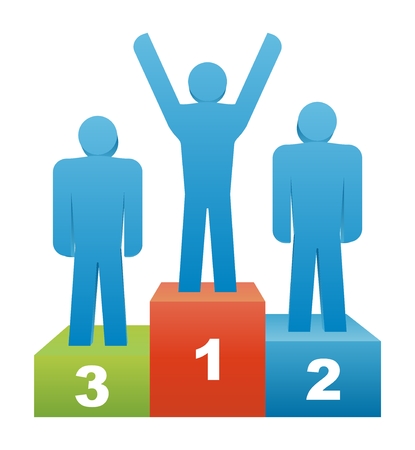Understanding Critical Thinking in Today’s Workplace
What Is Critical Thinking?
Critical thinking is the ability to analyze information objectively, consider different perspectives, and make reasoned decisions. In simple terms, it means not just accepting things at face value but asking questions, weighing evidence, and thinking through possible outcomes before making a choice. This skill helps employees identify real problems, spot opportunities for improvement, and avoid costly mistakes.
Why Is Critical Thinking Important at Work?
Modern workplaces are fast-paced and constantly changing. New challenges pop up every day, and employees need more than technical know-how to succeed. Critical thinking allows team members to:
| Benefit | Description |
|---|---|
| Better Decision-Making | Employees can evaluate options and choose the best course of action. |
| Innovation | Thinking critically opens up new ways to solve problems or improve products. |
| Adaptability | The ability to assess situations helps teams adjust quickly to change. |
| Conflict Resolution | Candidates can see issues from multiple viewpoints and find fair solutions. |
How Critical Thinking Drives Innovation and Problem-Solving
No matter the industry—tech, healthcare, education, or finance—critical thinkers help drive progress. They ask tough questions like “Is there a better way to do this?” or “What if we tried something new?” By challenging the status quo and encouraging open-minded discussion, critical thinkers help their organizations stay ahead of the competition.
Examples Across Industries
| Industry | Critical Thinking in Action |
|---|---|
| Technology | Developers brainstorm creative solutions to software bugs instead of following old methods. |
| Healthcare | Nurses evaluate patient symptoms carefully instead of jumping to conclusions about diagnosis. |
| Retail | Managers analyze customer feedback trends to adapt sales strategies. |
| Finance | Analysts question assumptions behind investment risks before making recommendations. |
The Takeaway: Standing Out With Critical Thinking Skills
If you want to stand out from the crowd in today’s job market, developing your critical thinking skills is key. Employers across all sectors look for candidates who can solve complex problems, suggest new ideas, and adapt to change with confidence. Understanding what critical thinking means—and why it matters—is the first step toward making yourself an asset in any workplace.
2. Key Critical Thinking Skills Employers Value
In today’s fast-paced and ever-changing workplace, employers are looking for candidates who can do more than just follow instructions. They want people who can think critically—analyze situations, evaluate information, and make smart decisions. Let’s break down the key components of critical thinking that companies value most, and see why these skills matter so much on the job.
Essential Components of Critical Thinking
| Skill | Description | Why Employers Value It |
|---|---|---|
| Analysis | Breaking down complex problems into smaller parts to understand them better. | Helps employees identify root causes and find effective solutions quickly. |
| Evaluation | Assessing information or arguments to judge their credibility and relevance. | Ensures decisions are based on facts, not assumptions or biases. |
| Reasoning | Making logical connections between ideas and drawing sound conclusions. | Leads to well-thought-out recommendations and strategies. |
| Problem-Solving | Applying knowledge and logic to overcome challenges. | Keeps projects moving forward even when issues arise. |
| Open-Mindedness | Being willing to consider different perspectives or new evidence. | Encourages innovation and adaptability in changing environments. |
How Companies Prioritize Critical Thinking Skills
Employers in the U.S. often mention “critical thinking” as a top requirement in job postings across industries—from tech to healthcare to finance. During interviews, hiring managers might ask candidates about times they solved a tricky problem or made a tough decision. Companies know that employees who can analyze, evaluate, and reason will help them stay competitive in the marketplace. In fact, many organizations offer training programs to help staff strengthen these abilities, showing just how important critical thinking is for both personal growth and business success.
![]()
3. Practical Strategies to Enhance Your Critical Thinking
Why Critical Thinking Matters at Work
Employers in the U.S. value team members who can analyze situations, solve problems creatively, and make well-informed decisions. Critical thinking is a top skill that helps you stand out from your peers and move ahead in your career.
Actionable Tips for Building Critical Thinking Skills
| Strategy | How to Apply at Work |
|---|---|
| Ask Clarifying Questions | Before jumping to conclusions, ask follow-up questions like “Can you explain more?” or “What’s the main goal here?” This helps you fully understand the issue before acting. |
| Challenge Assumptions | If something doesn’t add up, respectfully ask why things are done a certain way or suggest alternatives. For example, “Is there another method we haven’t tried yet?” |
| Use Data to Support Decisions | Look for facts and figures before making recommendations. Share data with your team to back up your ideas, showing that your approach is evidence-based. |
| Break Down Problems | Tackle big challenges by splitting them into smaller steps. List out tasks or use flowcharts to organize your thoughts and solutions. |
| Reflect on Outcomes | After finishing a project, take time to review what went well and what could be improved. Discuss lessons learned with your team for ongoing growth. |
Real-World Methods to Demonstrate Critical Thinking
Participate in Team Discussions
Share your point of view during meetings and listen actively to others. This shows you can think independently while valuing team input.
Create Pro/Con Lists Before Deciding
If you’re faced with multiple options, write down the advantages and disadvantages of each. This practical approach makes it easier to see the best path forward.
Keep Up With Industry Trends
Read articles, attend webinars, or join professional groups related to your field. Staying informed allows you to bring fresh perspectives and solutions to workplace challenges.
4. Showcasing Critical Thinking on Your Resume and in Interviews
Highlighting Critical Thinking on Your Resume
To get noticed by American employers, it’s important to show your critical thinking skills right on your resume. Instead of simply listing “critical thinking” as a skill, use specific examples that demonstrate how you’ve used it in past roles. Here are some ways to do this:
Use Action-Oriented Bullet Points
| Bad Example | Good Example |
|---|---|
| Responsible for solving problems at work. | Analyzed workflow inefficiencies and implemented solutions that reduced project turnaround time by 20%. |
| Used critical thinking in team projects. | Evaluated competing project proposals and recommended the most cost-effective strategy, saving the company $15,000 annually. |
Notice how the good examples focus on results and specific actions. This is what American hiring managers look for—clear evidence of your impact.
Mentioning Critical Thinking in Your Cover Letter
Your cover letter is a great place to tell a story about your critical thinking abilities. Choose a situation where your decision-making led to a positive outcome. Use the STAR method (Situation, Task, Action, Result) to structure your example:
- Situation: Briefly describe the challenge or problem.
- Task: Explain your responsibility.
- Action: Share what steps you took.
- Result: Highlight the positive outcome.
Example:
“When our team was faced with declining customer satisfaction scores (Situation), I was tasked with identifying the root cause (Task). By analyzing feedback data and leading brainstorming sessions (Action), I helped develop new training materials that improved our scores by 30% within three months (Result).”
Demonstrating Critical Thinking During Interviews
American interviewers often ask behavioral questions to assess your critical thinking. Be ready with real-life examples. If asked, “Tell me about a time you had to solve a difficult problem at work,” walk them through your thought process step-by-step. Emphasize how you gathered information, weighed options, made decisions, and measured results.
Sample Interview Response Structure
| Step | Description | Sample Phrase |
|---|---|---|
| Identify the Problem | Explain what issue you faced. | “I noticed our sales numbers were dropping unexpectedly.” |
| Gather Information | Mention how you researched or collected data. | “I reviewed recent sales reports and spoke with team members.” |
| Evaluate Options | Describe how you considered different solutions. | “I brainstormed several approaches and weighed their pros and cons.” |
| Implement Solution | Tell what action you took. | “I proposed a new outreach strategy targeting key clients.” |
| Measure Results | Share what happened after your action. | “Within two months, sales rebounded by 15%.” |
Key Phrases That Resonate With American Employers
- “Analyzed complex situations to make informed decisions”
- “Developed innovative solutions under tight deadlines”
- “Collaborated with cross-functional teams to solve problems”
- “Used data-driven insights to improve processes”
- “Adapted strategies based on new information”
The more concrete and measurable your examples are, the stronger your case will be. Focus on showing—not just telling—that you are a strong critical thinker who can add value in any workplace.
5. Standing Out from the Crowd: Real-Life Success Stories
Critical thinking isn’t just a buzzword—it’s a real game-changer in today’s American workplace. Let’s dive into some real-life stories and case studies that show how professionals have used critical thinking to break away from the pack and move their careers forward.
Case Study 1: Turning Customer Feedback into Innovation
Samantha, a product manager at a tech startup in Austin, Texas, noticed repeated complaints from users about one feature in their app. Instead of just forwarding the feedback to the engineering team, she analyzed the data, held brainstorming sessions with different departments, and proposed a unique solution. Her critical thinking not only solved the issue but led to a new feature that increased user engagement by 30%. Samantha was soon promoted to lead a larger product team.
Case Study 2: Solving Logistics Challenges on the Fly
David worked for a major logistics company in Chicago. When unexpected weather caused delays across multiple routes, many of his colleagues waited for upper management’s direction. David, however, assessed available resources, rerouted shipments using real-time data, and communicated clearly with clients. His quick thinking kept deliveries on track and earned him recognition as Employee of the Month.
Case Study 3: Navigating Complex Healthcare Regulations
In Los Angeles, Emily, an HR specialist at a healthcare provider, faced new federal regulations that impacted employee benefits. She proactively researched the changes, organized workshops for staff, and presented compliance strategies to leadership. Her initiative saved the company from costly penalties and positioned her as a go-to expert for regulatory issues.
How Critical Thinking Made an Impact
| Name | Industry | Challenge | Critical Thinking Action | Outcome |
|---|---|---|---|---|
| Samantha | Tech/Product Management | User complaints about app feature | Analyzed data & collaborated cross-functionally | Improved product & career advancement |
| David | Logistics/Operations | Severe delivery delays due to weather | Assessed situation & created alternate plans quickly | Avoided losses & gained recognition |
| Emily | Healthcare/HR | Complex new federal regulations | Took initiative to educate and guide organization | Saved costs & became compliance leader |
The Takeaway from These Stories
These examples show that critical thinking helps professionals not just solve problems, but also spot opportunities and drive positive change. In the modern American workplace, being proactive and analytical can truly set you apart from your peers.


